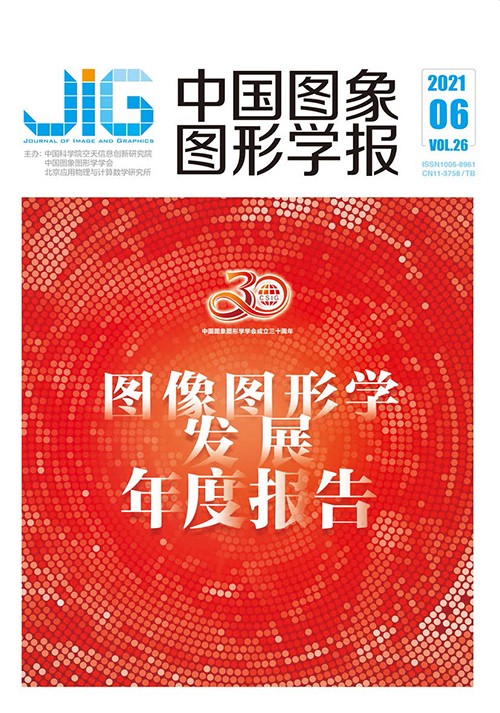
面向体验质量的多媒体计算通信
摘 要
随着移动互联网和通讯技术的发展,多媒体通信技术成为国家信息产业发展的重大需求,广泛地应用在视频会议、各类直播应用、远程医疗、远程监控和远程教育等方面。然而,大容量多媒体通信业务面临着网络带宽的压力。本文将媒体计算引入通信系统,建立新的多媒体通信研究范式,从提升体验质量(quality of experience,QoE)的角度,形成新的多媒体编码与传输方法,从根本上降低网络带宽需求的压力。体验质量即信息接收者结合自身期望对客观信息载体的有关性能给出的主观评价,是区别于服务质量(quality of service,QoS)的通信质量评价准则。本文介绍了QoE的评价准则,分为基于用户的评价方法和基于客观参数的评价方法,通过用户主观评分或对用户的相关生理、心理指标进行测量进而分析、推测用户的感受;或者通过对业务客观指标的主观化修正实现体验质量的评价。本文综述了多媒体编码方法,主要包括基于波形的编码和基于内容的编码方法。前者对任意视频信号进行有效编码而不需要分析视频内容,如一系列视频编码标准;后者识别视频序列中的物体和相关区域并对它们进行编码。本文阐述了5G+AI(artificial intelligence)时代的新型视频传输方法,如多视点视频编码、4 K、8 K视频编码,3D立体视频,点云、光场、AR(augmented reality)、VR(virtual reality)等视频业务。
关键词
Quality of experience oriented multimedia computing communications
Tao Xiaoming1, Yang You2, Xu Mai3, Duan Yiping1, Huang Danlan1, Liu Wenyu2(1.Tsinghua University, Beijing 100084, China;2.Huazhong University of Science and Technology, Wuhan 430074, China;3.Beihang University, Beijing 100191, China) Abstract
With the development of mobile Internet and communication technology, multimedia communication technology has become a major demand for the development of the national information industry, which is widely used in video conferencing, various live broadcast applications, telemedicine, remote monitoring, and remote education. However, large-capacity multimedia communication services face pressure on network bandwidth. Media computing is introduced into the communication system, a new multimedia communication research paradigm is established, and a new multimedia coding and transmission method is developed from the perspective of improving the quality of experience (QoE), which fundamentally reduces the pressure on network bandwidth requirements. The quality of experience refers to the subjective evaluation of the relevant performance of the objective information carrier by the information receiver in combination with its own expectations. It is a communication quality evaluation criterion that is different from the quality of service (QoS). This article initially introduces the evaluation criteria of QoE, which are divided into user-based evaluation methods and objective parameter-based methods. The user’s subjective score or the measurement of the user’s relevant physiological and psychological indicators is used to analyze and infer the user’s feelings. The subjective correction of business objective indicators realizes the evaluation of experience quality. Then, multimedia coding methods, including waveform-based coding and content-based coding methods are reviewed. The former effectively encodes any video signal without analyzing the video content, such as a series of video coding standards; the latter identifies objects and related areas in the video sequence and encodes them. Subsequently, this article describes new video transmission methods in the 5G+AI(artificial intelligence) era, such as multiview video coding, 4 K, 8 K video coding, 3D stereo video, point cloud, light field, AR(augmented reality), VR(virtual reality), and other video services. Video services and communication channels are the source and channel parts of the video communication system, respectively, and the relationship between them can usually be compared with the relationship between water sources and water pipes. The continuous development and changes in communication technology, especially the international competition of 5G technology and products, have attracted widespread attention. Channels continuously increase; hence, the transmission rates become fast. Communication becomes ubiquitous. Thus, the rolling development between the source and the channel becomes increasingly influential. Academia and industry mostly solve the high-definition and low-latency challenges faced by video communication systems from two aspects, as follows: video characterization and coding and video transmission. Video coding aims to find effective data compression techniques to reduce the bit rate of video sequences for real-time transmission on a given communication channel. Image compression coding uses the statistical characteristics of the image itself, as well as the user’s visual physiology and psychology characteristics, to extract the effective information in the image and remove useless or less useful redundant information. Channel bandwidth varies with different applications and transmission media. Different types of video coding algorithms have been developed; they include effective coding of arbitrary video signals without the need to analyze video content and identify objects and related areas in the video sequence to encode them. The former approach is referred to as a waveform-based encoder, and the latter is a content-based video encoder. With the help of artificial intelligence and machine learning technology, the innovative exploration of information representation from “bit→structure” can effectively overcome the influence of noise and interference in the propagation environment and improve the reliability and efficiency of wireless communication. The amount of data transmitted is greatly reduced by introducing a priori knowledge. The audiovisual service breaks the traditional user-server (content server or content delivery network(CDN) server) video streaming push mode and adds edge computing nodes to satisfy the computing requirements of secondary encoding, virtual scene generation, and scene rendering, generated during the interaction. In the future, the media inevitably aims at “a thousand people with a thousand faces” and develops in the direction of large data volume, large calculation volume, and large communication volume. The business architecture has the characteristics of “cloud-side-end” collaborative computing, which derives richer media applications in the future. The quality of communication system is evaluated from the perspective of QoE. QoE reflects the subjective evaluation of the objective information carrier (voice, image, and video) after the information receiver perceives the objective information carrier’s performance. The current QoE evaluation methods are mainly divided into two categories, namely, user-based evaluation methods and evaluation methods based on objective parameters. User-based evaluation methods include all evaluation methods that require user participation. Specific indicators or information about the QoE need to be obtained directly from users. The evaluation methods based on objective parameters realize the evaluation of experience quality through the subjective correction of objective indicators.
Keywords
computing communication multimedia communication evaluation criteria multimedia coding multimedia transmission
|



 中国图象图形学报 │ 京ICP备05080539号-4 │ 本系统由
中国图象图形学报 │ 京ICP备05080539号-4 │ 本系统由